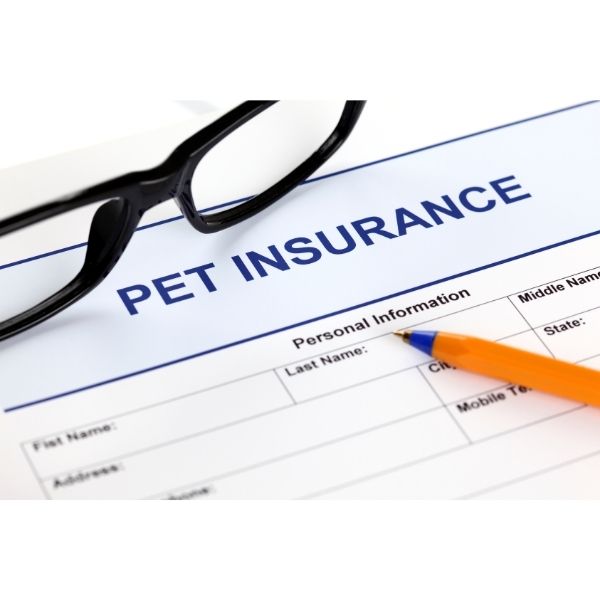
Pet insurance has come a long way millions of pet owners in the U.S. have learned to trust it to help offset the cost of veterinary care. But just how expensive is pet insurance in 2025, and what are the elements that play a role in that price? If you’re thinking of insuring your pet, here is a guide to what you can expect to pay and what’s considered when setting ups the cost of your premium, in addition to some pointers on how to find the best insurance deal for your pet and budget
Average Cost of Pet Insurance in 2025
The price of pet insurance is determined by several factors, but national averages can be helpful:
* Dogs: Depending on the source and level of coverage you choose, the monthly average premium for dogs ranges from $43 up to $62. For a traditional policy with $5,000 worth of annual coverage, plan on spending about $46-$51 each month. With unlimited, you can drive that figure to $73–$80 per month or higher.
* Cats: Cats are typically less costly to insure, with average monthly premiums between $23 and $32. At $5,000 a year in coverage, it averages around $23 to $27 a month.
By Age and Breed
- It’s less expensive to insure puppies and kittens than older animals. For instance, a 3-month-old puppy could run you $42/month, while a 7-year-old dog could set you back $71/month for the same coverage.
- Breed counts: Health-problem breeds such as French Bulldogs — among many other potential breeds — cost more to insure (up to $92/mo from French Bulldog).
By State
Location is very important too. For instance, in April 2025:
- Some of the highest include Alaska and New York (dogs: $56–$58; cats: $31).
- Arkansas, Texas and Alabama are lowest cost (dogs: $29–$35/month; cats: $13–$20/month).
What Factors Into The Cost of Pet Insurance?
There are several factors that affect how much you will spend on pet insurance:
- Pet’s Age: This is because older pets are more prone to illness or injury, and more costly to insure.
- Breed: Some breeds are at higher risk for genetic conditions, so it can cost more to insure them.
- Type of Animal: It’s typically more expensive to insure dogs than cats.
- Type of Coverage: Wellness plans aren’t as cheap as accident-only plans.
- Deductible & Reimbursement: Opt for higher deductibles and lower reimbursement to get a reduced premium but higher you pay from your side when you claim.
- Where you live: Veterinary expenses are based on your location, and so are premiums.
- Insurance Company: Pricing varies by company, so do shop around.
Types of Pet Insurance Coverage
There are a few different types of plans to choose from, so when comparing pet insurance, make sure you know what type of plan will be the best fit for you and your budget:
Accident and Illness: The most popular policy type, this policy includes injuries, illnesses, hereditary conditions and in some cases, alternative therapies.
Accident-Only: Covers only accident-related injuries—cheaper, but limiting.
Wellness/Routine Care: Provides coverage for preventive care, such as vaccines and checkups; often offered as an add-on.
Comprehensive (“Nose to Tail”): Includes everything above, as well as additional services such as dental, therapy and more.
How to Save on Pet Insurance
Get Multiple Quotes: Prices for the same pet and coverage can vary widely, so get quotes from several insurers.
Select the Correct Coverage: Don’t overinsure — match the coverage to your pet.
Raise Your Deductible: The higher the deductible, the lower the monthly premium.
Sign Up Early: If you can, get pet insurance for a puppy or kitten. Young animals are less expensive to insure, and you will sidestep having pre-existing conditions excluded from the coverage.
Check for Discounts: Lots of insurance companies offer multi-pet, military, or other discounts.

Real-World Examples
- A 2-year-old mixed-breed dog in California: $40 to $58 a month for $5,000 in annual coverage, depending on provider and deductible.
- A 5-year-old Labrador Retriever in New York: $62 a month for up to $5,000 in coverage; $90 a month for unlimited coverage.
- A 4-year-old domestic shorthair cat in Texas: $20 to $23 a month for $5,000 of coverage.
Frequently Asked Questions
Why does pet insurance cost more for dogs than cats?
Dogs are generally more accident-prone and inherit more health problems and their veterinary treatments are usually more expensive than those for cats is reflected in the cost of premiums.
Will my pet’s premium go up as they get older?
Yes, premiums generally increase annually as your pet ages and the likelihood of illness or injury rises. Anticipate annual hikes, especially after age 6 or 7.
What about pre-existing conditions?
No. Pre-existing conditions Commonly, pet insurance policies do not cover pre-existing conditions, although there are certain policies that will cover curable pre-existing conditions but impose a waiting period.
Am I able to tailor my pet insurance policy?
Yes. Most will also let you jiggle the deductible, reimbursement rate and annual coverage limit to fit your budget and needs.
Is pet insurance worth it?
For some, yes — especially if you need peace of mind against a vet bill that could be very expensive. It could save you thousands if your pet experiences a major health problem, but you’ll also want to consider the cost in light of your investing risk tolerance and financial situation.
Final Thoughts
It’s 2025, and pet insurance is more affordable and customizable than ever. Overall, you can expect to pay $43–$62 per month for dogs and $23–$32 per month for cats, with significant variation depending on breed, age, region, and the coverage level you choose. It is an extra expense, but pet insurance provides peace of mind and financial protection, particularly as the cost of veterinary care continues to climb.
To get the best value:
- Compare quotes by shopping around.
- Pick a plan that fits your pet.
- Sign up early for cheaper rates and wider coverage.
Here is what is covered, and what isn’t.
With the right pet insurance plan, you can rest assured that you’re giving your furry family member the best care around at a price tag you can afford. With more pet owners seeing the value, the pet insurance market has nowhere to go but up — meaning this is a good time to check out the options and protect your pet’s health and keep your wallet happy.







